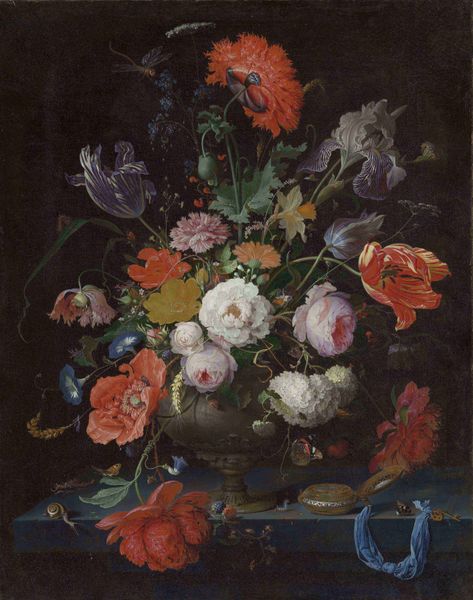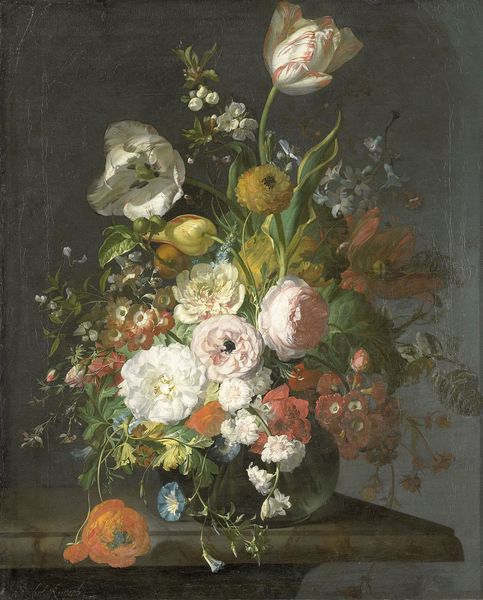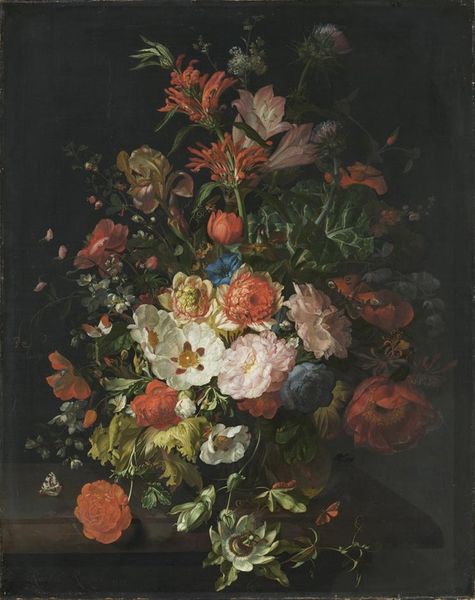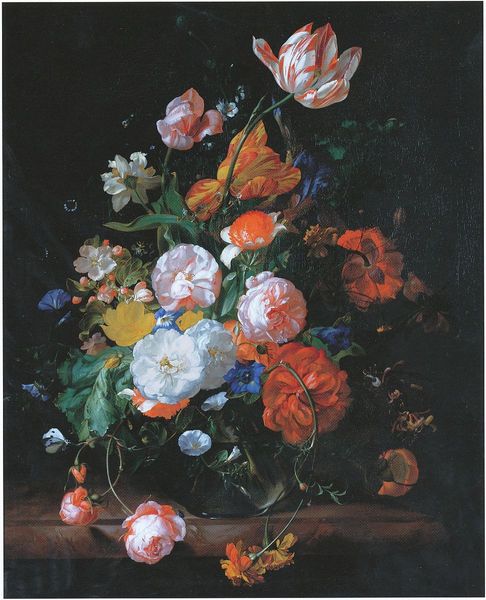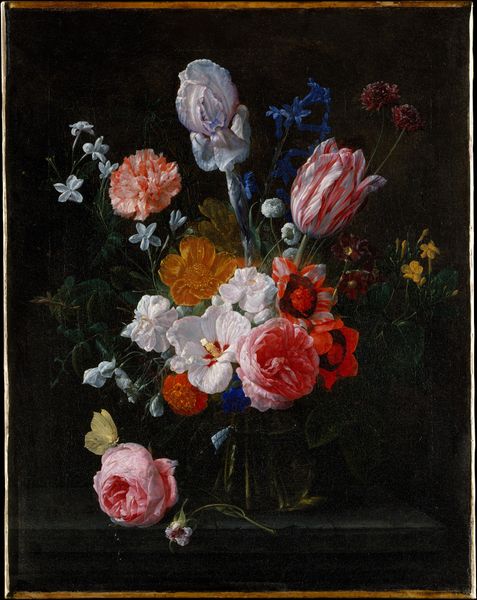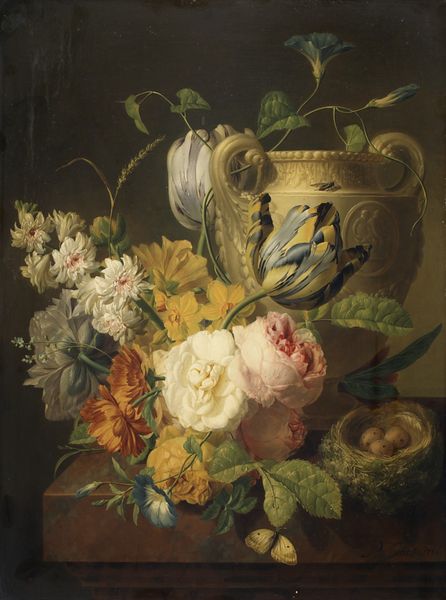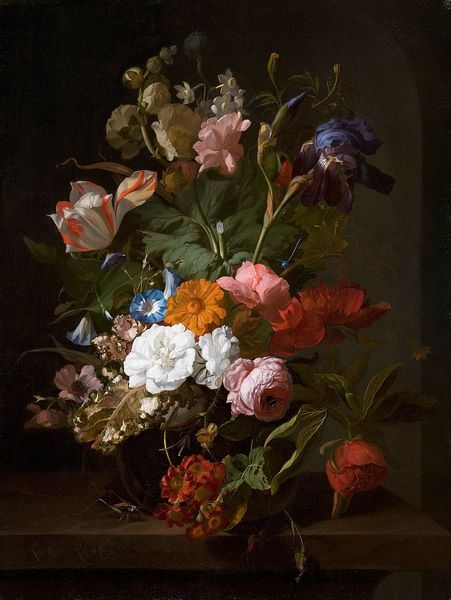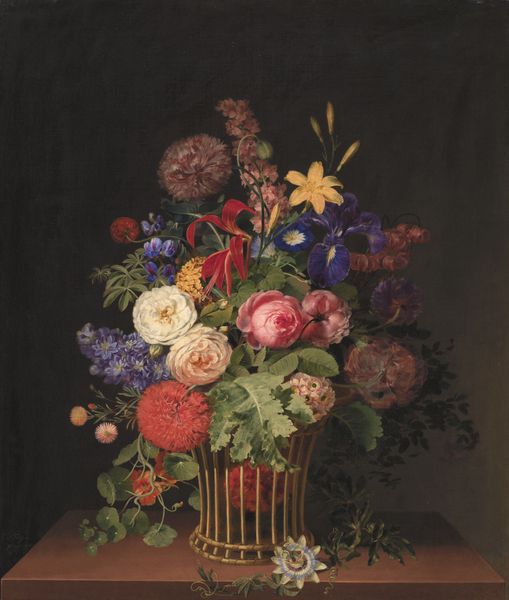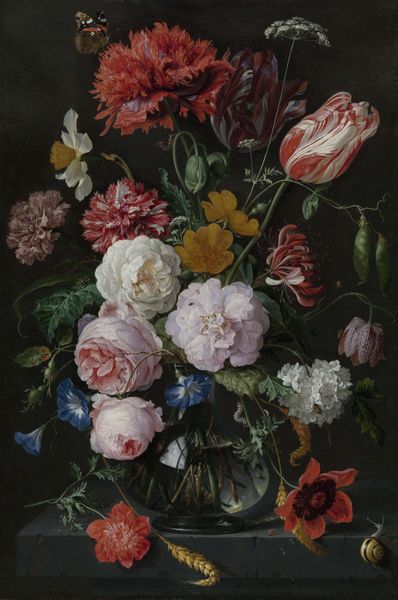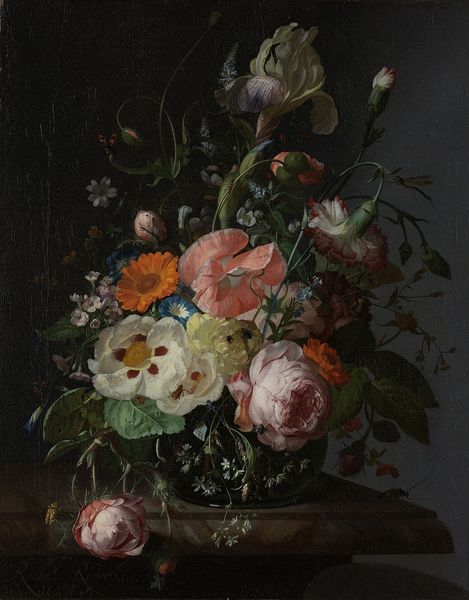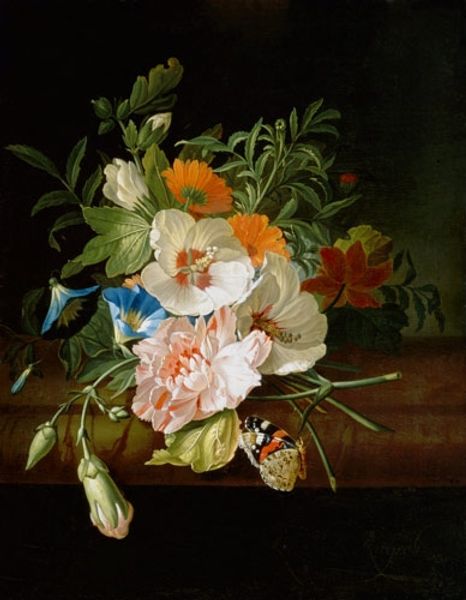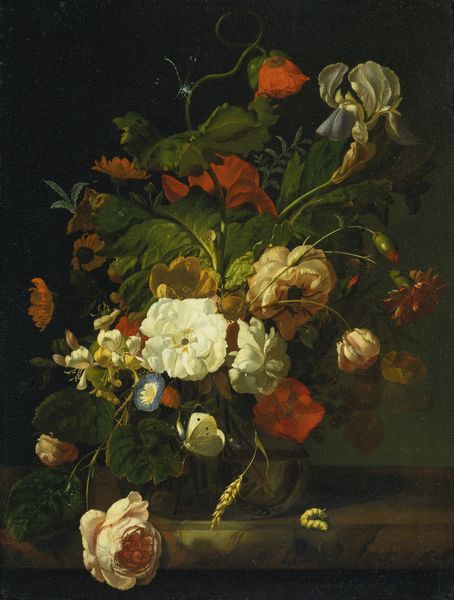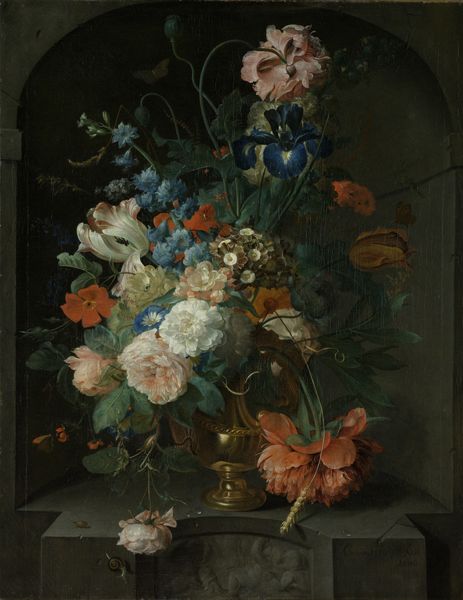
oil-paint
#
baroque
#
oil-paint
#
flower
#
oil painting
#
14_17th-century
#
genre-painting
Dimensions: 71.0 x 58.0 cm
Copyright: Public Domain
Curator: Welcome. Before us is "Still Life with Bouquet of Flowers" painted in 1677 by Jacob van Walscapelle. The work, rendered in oil paint, exemplifies the Dutch Baroque tradition and is currently held at the Städel Museum. Editor: It's instantly captivating. The abundance is overwhelming, and yet, controlled by the dramatic light. It feels almost like a stage set, carefully arranged. Curator: Precisely. Note how the composition is structured, a sort of pyramid of color rising from the tabletop. The artist utilizes impasto in areas to bring certain blooms into high relief and render depth while keeping a relatively restricted palette of earth tones and tertiary colors, augmented by jewel tones. Editor: Those jewel tones sing within the composition. Speaking of abundance, though: it feels like a vanitas, a symbolic representation of earthly pleasure destined to fade. The butterflies are transient creatures, the plums and berries overripe, maybe even infested? Curator: A astute observation. Many of these Dutch still lifes did function as subtle reminders of mortality and the fleeting nature of beauty. Look closer at the inclusion of the various blooms; flowers are more than just their aesthetic presentation. Tulips, for instance, were once symbols of wealth and status. Editor: So it’s a celebration, but one tinged with melancholy. This flower arrangement embodies the wealth of the era with a slight critique of decadence and materialism. Each carefully observed detail – a wilting petal, an insect poised to land – functions as a subtle moral reminder. Curator: An interesting way to connect those elements together. In terms of execution, consider how Walscapelle balanced textures, juxtaposing the smooth vase with the delicate petals and rough fruit, building a highly detailed painting. Editor: It does compel us to pause and consider what lurks beneath the surface. While visually enchanting, it encourages deeper reflections. I'll walk away remembering a broader sentiment beyond immediate beauty. Curator: Yes, I’d agree. In considering both its form and symbolism, the artist successfully creates an emotional narrative in a seemingly simple tableau.
Comments
stadelmuseum about 2 years ago
⋮
Jacob van Walscapelle has arranged a luxuriant bouquet of flowers and a selection of fruits on a stone pedestal. We recognise the transience of nature in the wide-open blossoms and overripe fruits. A swarm of insects is accelerating the process of decay by sucking at them. By contrast, the stone vase with its mythological decor dating from antiquity is intended to represent the permanence of human artistic skills. But even this does not last forever, as the cracks and traces of age on the stone pedestal show as a symbol of transience.
Join the conversation
Join millions of artists and users on Artera today and experience the ultimate creative platform.
